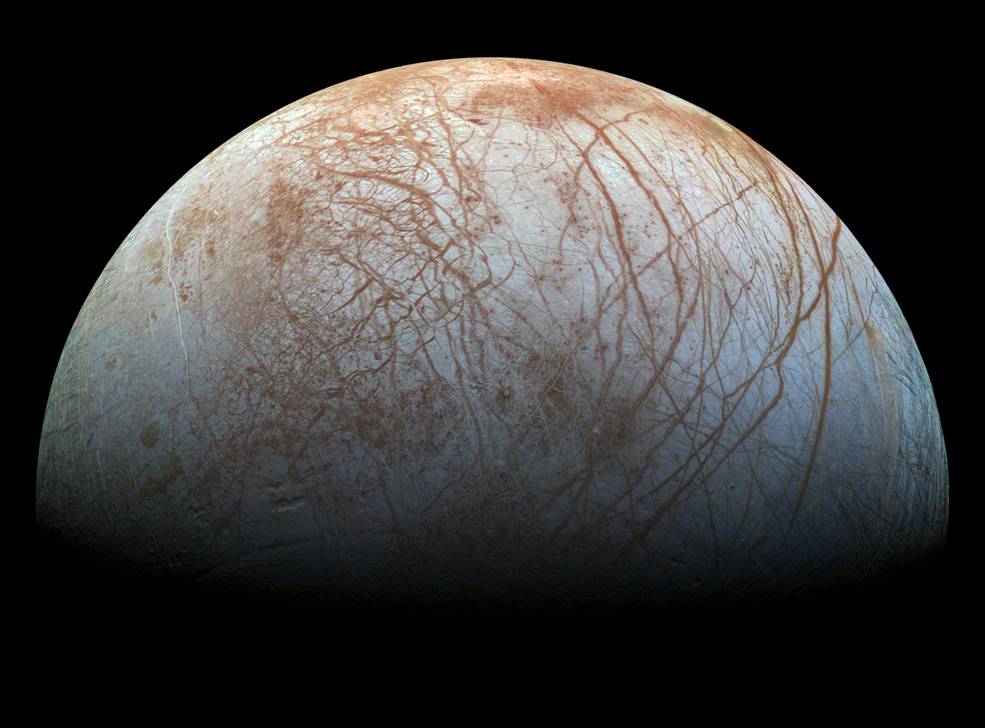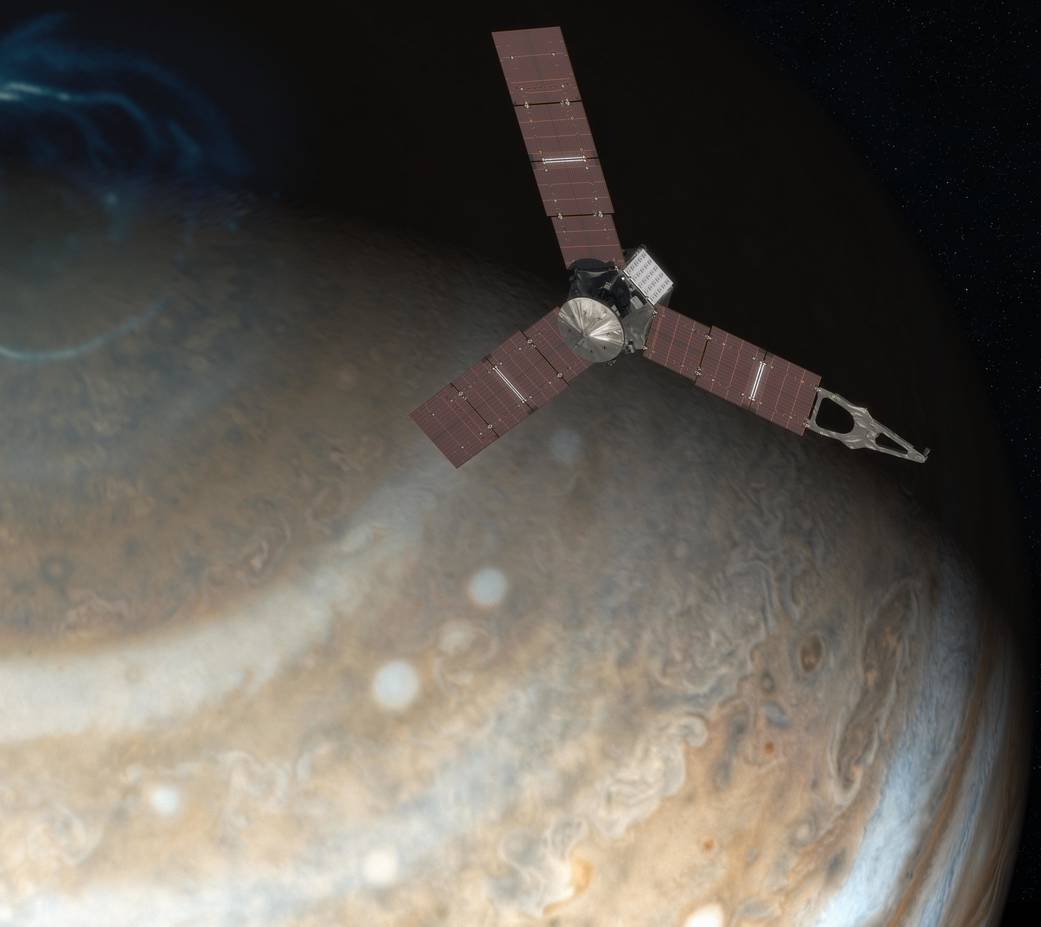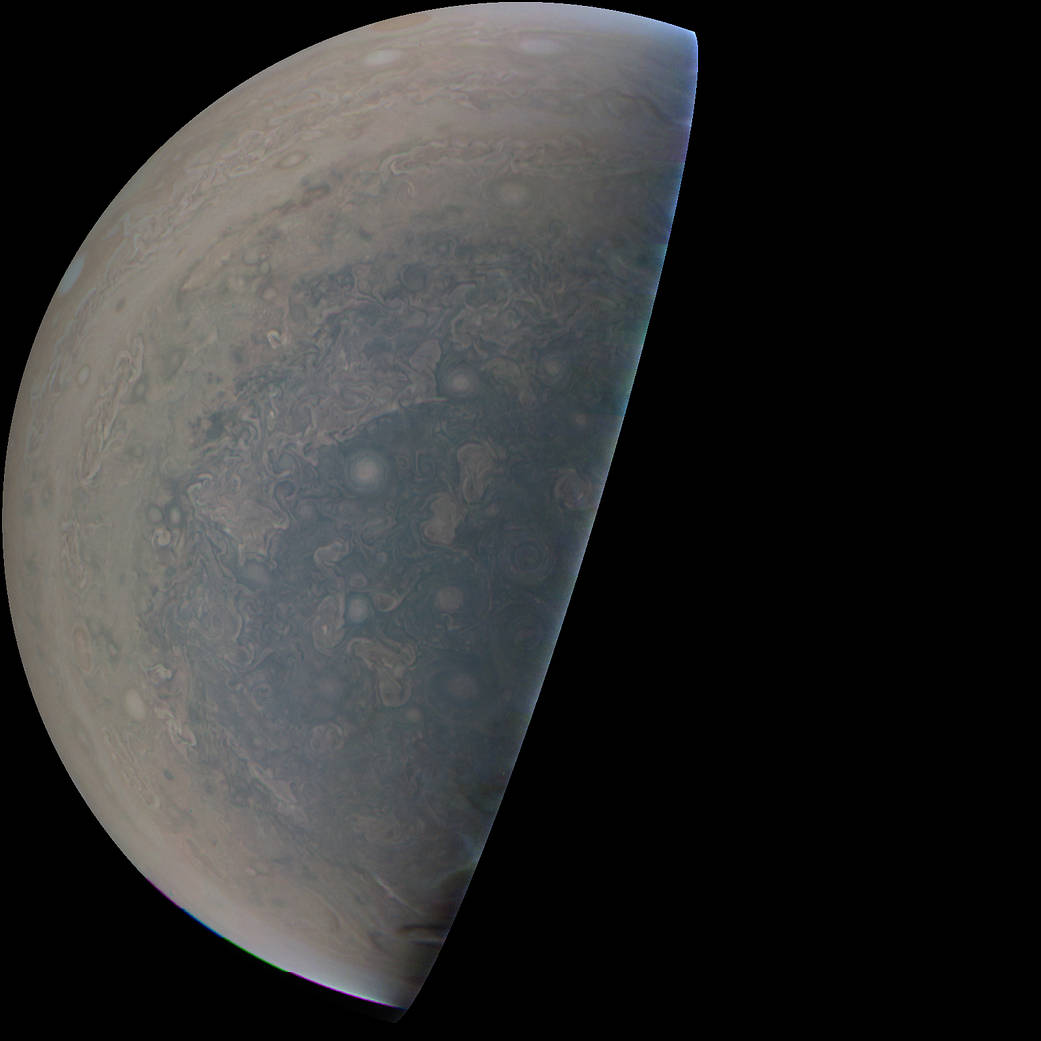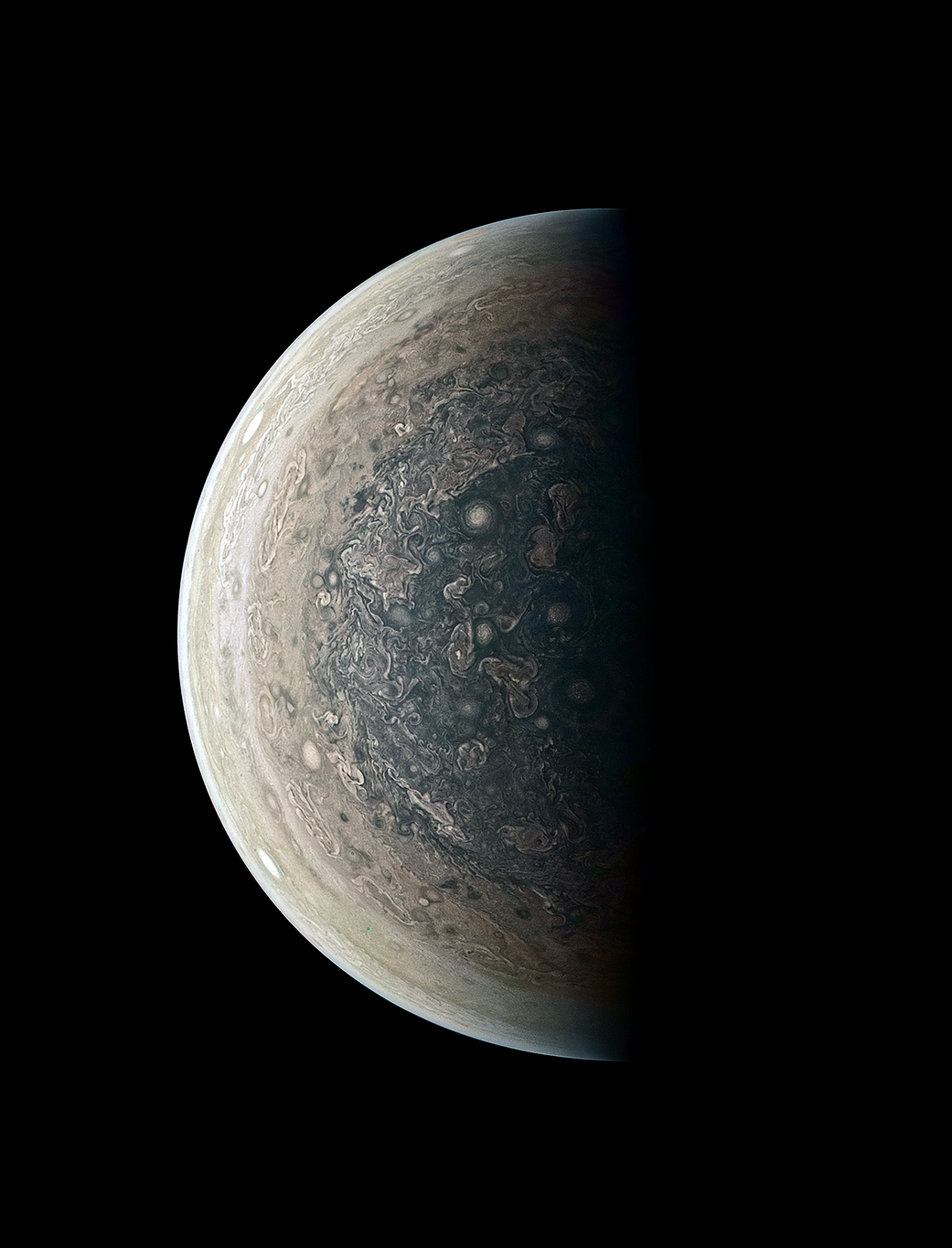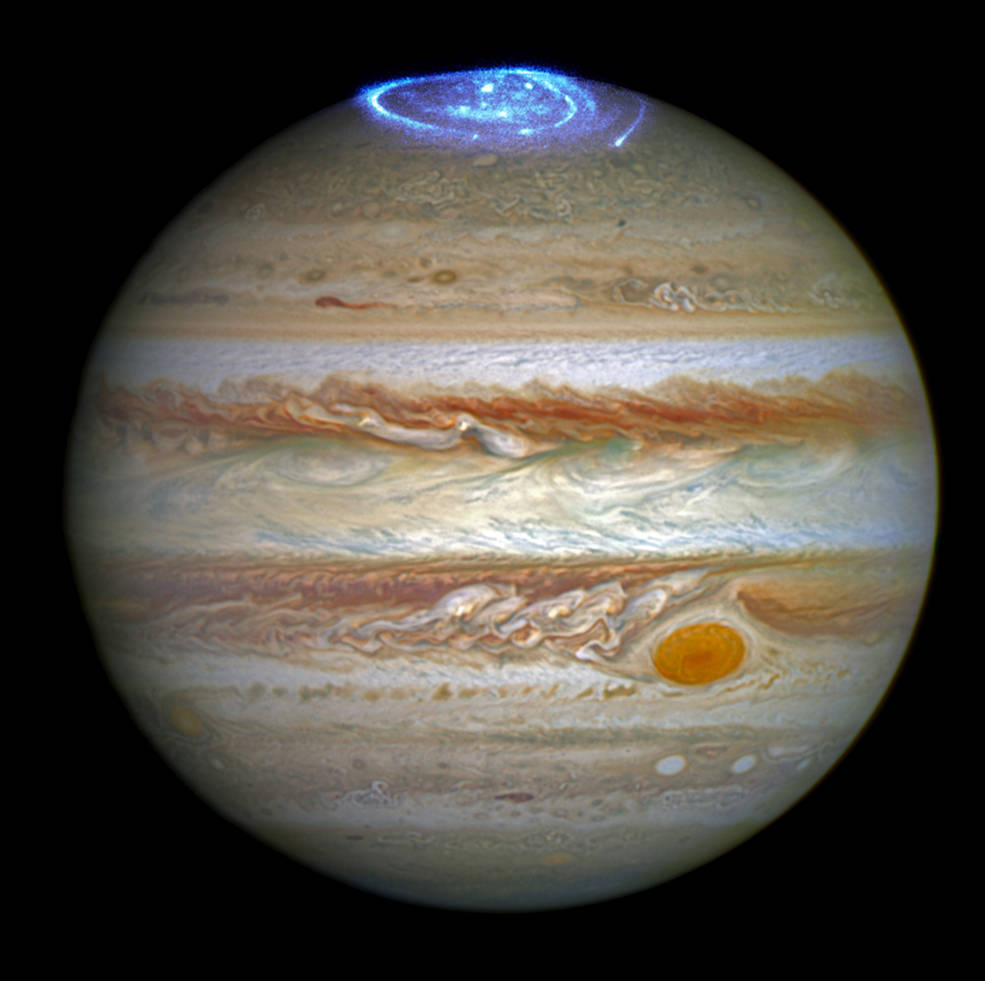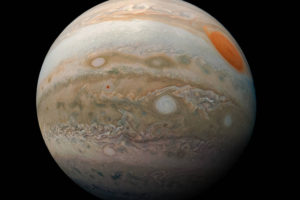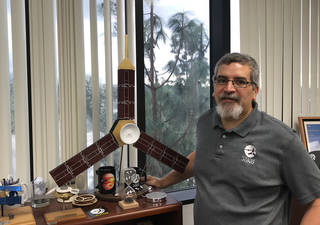NASA’s Europa Clipper mission is being designed to fly by the icy Jovian moon multiple times and investigate whether it possesses the ingredients necessary for life.
NASAのエウロパ探査計画では、氷結している木星の衛星であるエウロパ上空を繰り返し飛行してサンプルを取得し、生命に必要な成分を持っているかどうかを調べる計画です。
Credits: NASA/JPL-Caltech/SETI Institute
オリジナル記事:NASA Mission Named ‘Europa Clipper’
NASA’s upcoming mission to investigate the habitability of Jupiter’s icy moon Europa now has a formal name: Europa Clipper.
木星の氷の衛星であるエウロパで生命の存在を調査するNASAの計画に正式名称エウロパ・クリッパーがあります。
The moniker harkens back to the clipper ships that sailed across the oceans of Earth in the 19th century. Clipper ships were streamlined, three-masted sailing vessels renowned for their grace and swiftness. These ships rapidly shuttled tea and other goods back and forth across the Atlantic Ocean and around globe.
モニカ・ハーケンはクリッパー船に戻り、19世紀に地球の大洋を航海していました。クリッパー船は、優雅にして高速な特徴を持つ3つの帆立ちの帆船でした。これらの船は、紅茶やその他の品物を大西洋を高速に横断して世界中を行き来して行きました。
In the grand tradition of these classic ships, the Europa Clipper spacecraft would sail past Europa at a rapid cadence, as frequently as every two weeks, providing many opportunities to investigate the moon up close. The prime mission plan includes 40 to 45 flybys, during which the spacecraft would image the moon’s icy surface at high resolution and investigate its composition and the structure of its interior and icy shell.
これらの古典的な帆船の持つ壮麗な伝統を受け継ぎエウロパ・クリッパー探査機は、2週間に1度の割合でエウロパに接近する軌道を取り、エウロパに接近する多くの機会を得ます。観測の重要な計画として40〜45回エウロパに接近し、地表の氷の表面を高解像度で撮影しその内部の組成と氷の地殻の構造を調べることです。
Europa has long been a high priority for exploration because it holds a salty liquid water ocean beneath its icy crust. The ultimate aim of Europa Clipper is to determine if Europa is habitable, possessing all three of the ingredients necessary for life: liquid water, chemical ingredients, and energy sources sufficient to enable biology.
エウロパ探査は、氷の地殻の下に塩分のある液体の海が存在するため、長い間優先事項となってきました。 エウロパ・クリッパーの究極の目的は、生命の存在に必要な液体の水、化学成分、エネルギー源という3つの条件をすべて揃えていて、エウロパに精目の存在が十分に可能かどうかを判断することです。
“During each orbit, the spacecraft spends only a short time within the challenging radiation environment near Europa. It speeds past, gathers a huge amount of science data, then sails on out of there,” said Robert Pappalardo, Europa Clipper project scientist at NASA’s Jet Propulsion Laboratory in Pasadena, California.
「探査機はエウロパ周辺の危険な放射線環境内から短時間で離れるような軌道を取らなければなりません。通過速度を速めながらも、膨大な量の科学データを収集し、そこから離脱するのです。」と、カリフォルニアのパサデナにあるNASAのJPLのエウロパ・クリッパープロジェクト科学者ロバート・パッパラードは説明しています。
Previously, when the mission was still in the conceptual phase, it was sometimes informally called Europa Clipper, but NASA has now adopted that name as the former title for the mission.
以前、計画そのものが概念的な段階にあった時から非公式にエウロパ・クリッパーと呼ばれていましたが、NASAは今ではその名前をミッションの名称として採用しました。
The mission is being planned for launch in the 2020s, arriving in the Jupiter system after a journey of several years.
計画では2020年台に打ち上げ、数年の飛行の後に木星やエウロパの空域に到達する予定です。
JPL manages the mission for the agency’s Science Mission Directorate in Washington.
For more information about NASA’s Europa Clipper mission, visit:http://www.nasa.gov/europa
Preston Dyches
Jet Propulsion Laboratory, Pasadena, Calif.
818-354-7013
preston.dyches@jpl.nasa.gov
Dwayne Brown / Laurie Cantillo
NASA Headquarters, Washington
202-358-1726 / 202-358-1077
dwayne.c.brown@nasa.gov / laura.l.cantillo@nasa.gov
2017-065
Last Updated: March 10, 2017
Editor: Tony Greicius
訳者注:
NASAの公式サイトの一番目に大きくこの記事が掲載されたので「何か発見されたのか!」とびっくりしましたが特別新情報も何もない記事でした。
木星探査機ジュノーの話ではなく、木星の衛星エウロパへの新たな探査計画についてです。
現在7つの地球型惑星を持つトラピストや、土星の衛星エンケラドスでの生命探査の話題で盛り上がりを見せているので、この分野においてはある意味先輩にあたるエウロパでの探査計画「エウロパ・クリッパー」の関係者も黙っていられないというところなのでしょうか。
それにしても打ち上げが2020年以降のいつかも決まっていないような状況では、エンケラドスに史上初の地球外生命体発見の名誉が行ってしまいそうです。
NASAのTRAPPIST最新情報を翻訳 居住可能ゾーンにある地球サイズの惑星
